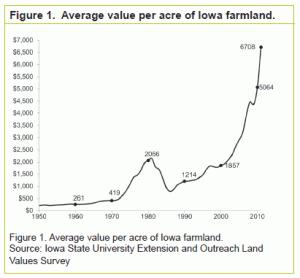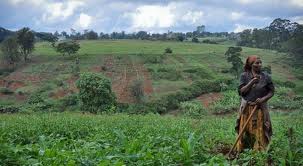By: Scott Baker
The following post ran just recently over at Pathfinder Ventures blog, an investment advisory and asset management firm focused on select Frontier Markets. Our own Scott Baker provided the dialogue.
The following content is provided courtesy of our colleague Scott. As Scott is passionate about the case for investment in frontier agriculture – a point in which we share much common ground – we asked him to share some of his insight:
“Last week I had lunch with an executive of a Mongolian real estate firm, where the conversation turned to the topic of how difficult it is to find real estate in city centres around the world at attractive yields. The hunt for such an opportunity brought back fond memories of the early 2000’s, when prices in many developing countries were undervalued and before dovish monetary policy created a stampede of investors seeking yield in developing world real estate.
We agreed that Ulaanbaatar’s downtown core is one of the world’s last real opportunities, where cap rates in excess of 10% are not uncommon. However, yield compression is underway as Mongolia transitions from a country where money was put into the ground to one where wealth is generated from assets coming out of the ground (mining). Further, on 17 June of this year the government initiated a program offering 8.0% mortgages for 20 years, a trend that is already gaining significant traction and if sustained will soon provide upward pressure on both commercial and residential property prices.
Though, if you’re not going to come to UB to compete with the Mongolia Growth Groups and MAD’s of the world, where else can you turn? You certainly can’t look frontier market hotspots like Phnom Penh, Luanda, Yangon or Maputo, as real estate is already overpriced. For example, shop houses in Phnom Penh are selling for $500,000+ and you’re lucky if you can garner a cap rate of 4.0%. Unfortunately, for the time being the real opportunity in city centers has come and gone. In our opinion, today’s real opportunity lies in farmland.
A global re-balancing of agricultural demand is well underway as a rising middle class of two billion people in the developing world demands larger per-capita quantities of everything from cereals to proteins. As countries seek food security there are two trends, among others, that I expect to accelerate: acquisitions of western brands (e.g. Shuanghui’s recent acquisition of Smithfield Foods), and increased demand for frontier agricultural land.
Why frontier farmland? Land in developed economies is no longer attractive to investors seeking a respectable cap rate, as Iowa farm prices confirm. In the mid-2000’s land prices went parabolic (see chart below) for what I term “Grade A” farmland (defined as land with rich soils, ample water supply and nearby important infrastructure). Though the uptrend has continued since 2010 through increased leverage from debt financing, a stage of maturity is likely nearing. So, rather than jumping on the bandwagon at this point and receiving a harsh thrashing (pun intended) I am upbeat about “Grade B” farmland (That which has a higher perceived risk due to its location and relative lack of development, causing it to be undervalued) as the potential upside is enormous.

Earlier this year I spent six months in Cambodia where market rates for agricultural concessions rank among the lowest in the world on a per-hectare basis, in some cases for as little as $500. The country’s red, loamy soils are ideal for growing rubber (a major cash crop in the region) and the market rate for operating plantations ranges between $10,000 to $20,000 per hectare. Investment in Cambodia is predicated on mean reversion between its two larger and more developed neighbors Thailand and Vietnam; that is, prices will have more significant upside due to higher prices in those countries. According to one of my local contacts, rubber plantations in those countries currently sell for as high as $50,000 per hectare.Pathfinder Capital’s focus is on frontier markets where we see that significant upside still exists. Farmland and agribusiness, in select African and Asian nations, are two areas ripe with inefficiencies and lacking value-added services, resulting in sub-par yields and profits. Combined with the fact that the global agricultural community faces a demographic time bomb of aging farmers and slowing yield growth, the risk of both commodity and land values rising substantially continues to increase.
Therefore, we believe that capitalizing on this trend through aiding the increase of crop yields will lead to elevated cap rates and additional foreign investment.“
We’ll be discussing this subject more frequently in the near future, and tying it into an upcoming post on our current activities in southern Africa.

No comments:
Post a Comment